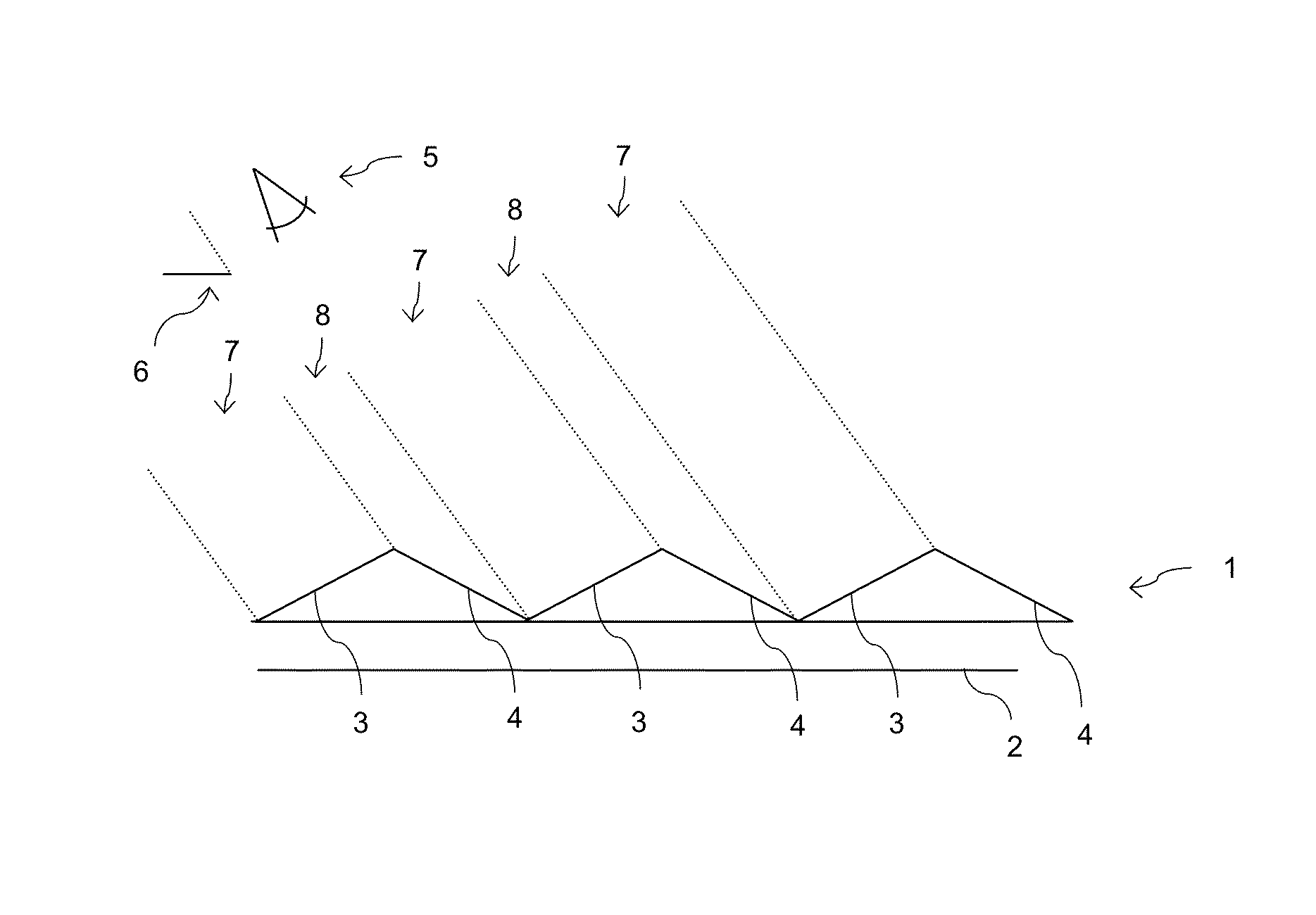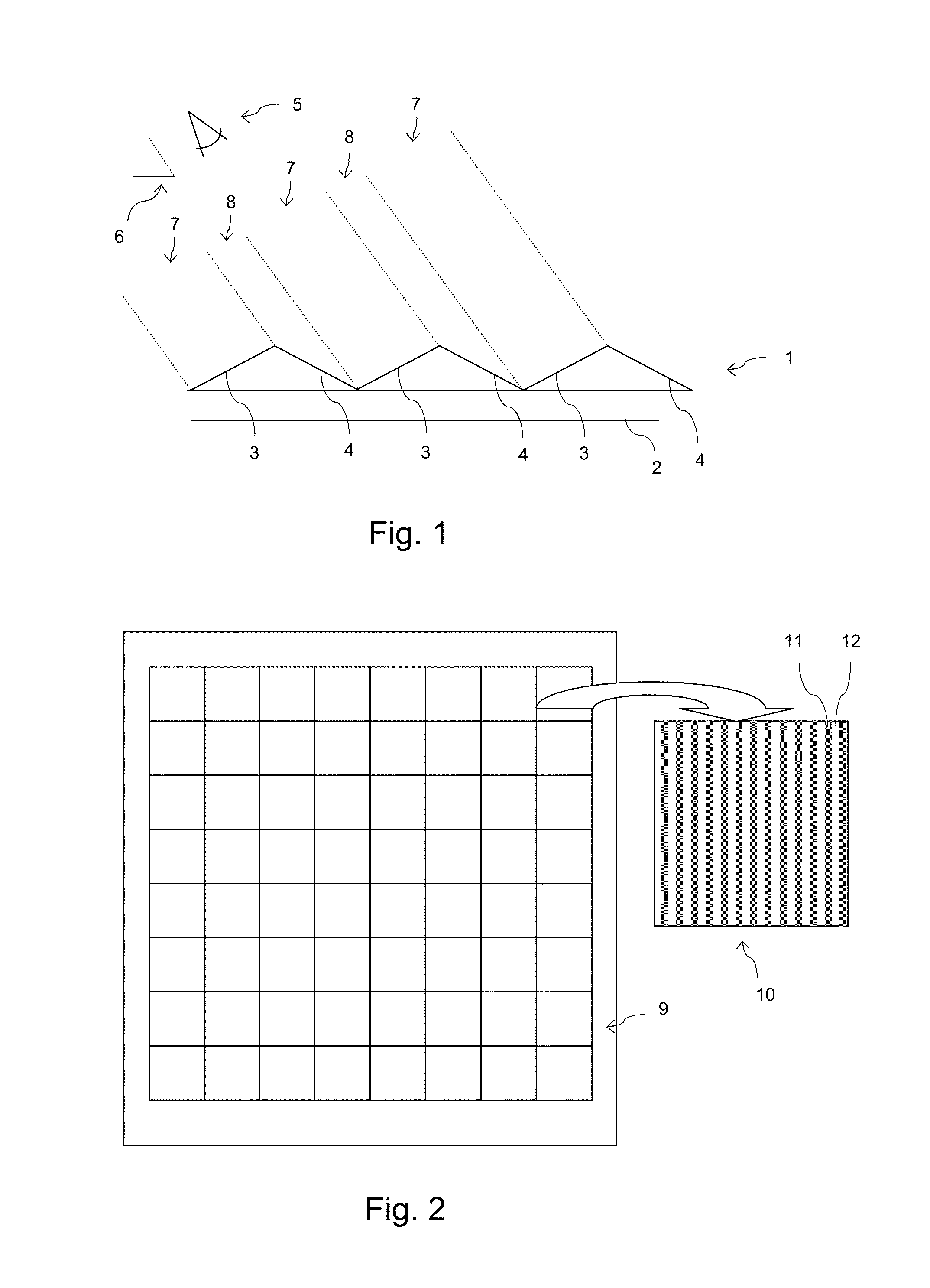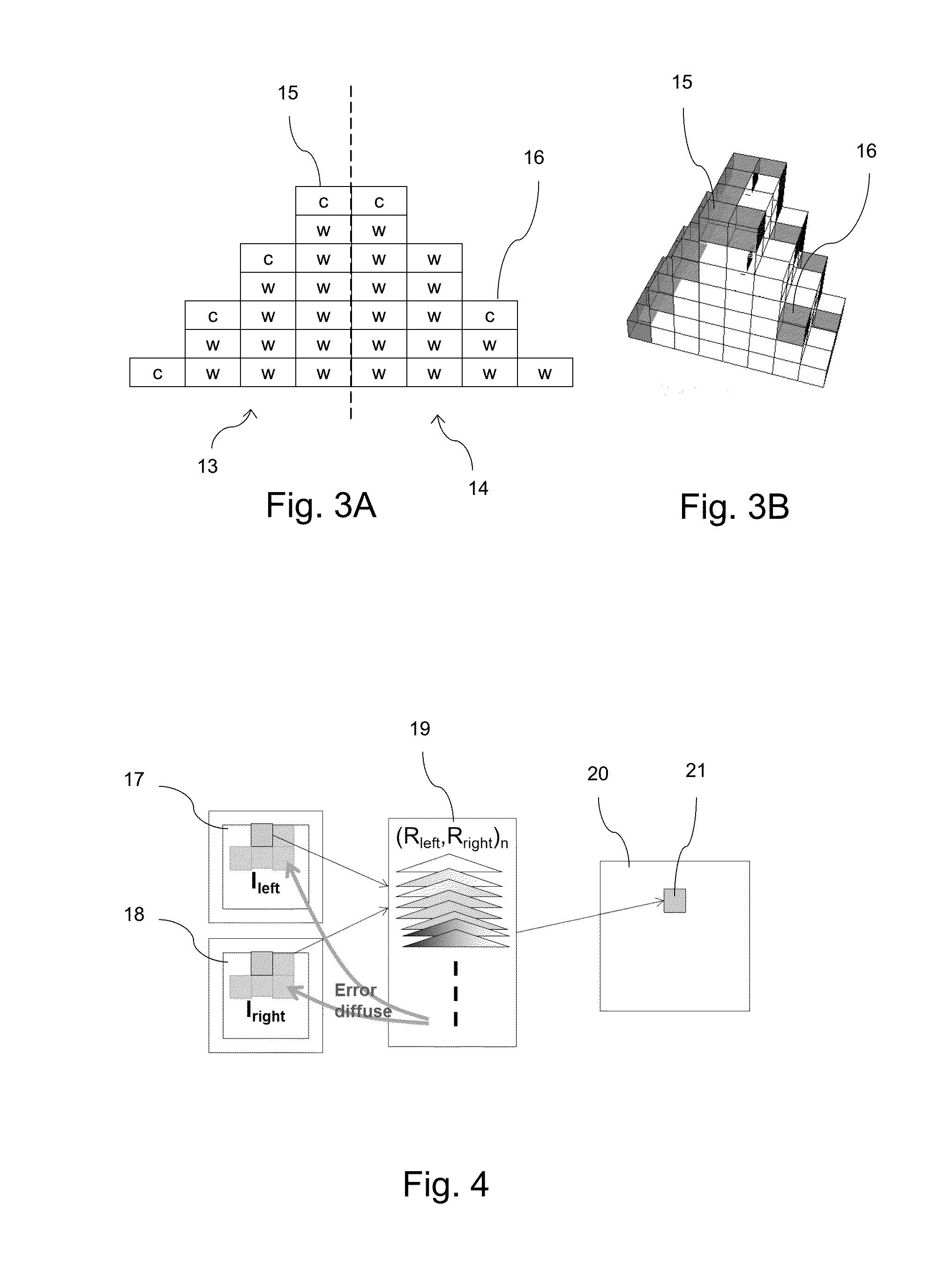Ghosting compensation in relief images for directional prints
a relief image and ghosting compensation technology, applied in printing, printing processes, coatings, etc., can solve the problem of not having a method to reduce this ghosting effect, and achieve the effect of reducing the ghosting
- Summary
- Abstract
- Description
- Claims
- Application Information
AI Technical Summary
Benefits of technology
Problems solved by technology
Method used
Image
Examples
Embodiment Construction
[0016]The present invention will now be described with reference to the accompanying drawings, wherein the same or similar elements are identified with the same reference numeral.
[0017]FIG. 1 shows a profile of a relief print with structural elements 1 on a flat substrate 2. The structural elements have each two principle surface orientations, one, surface 3, directed to the left side and one, surface 4, directed to the right side in the figure. A relief print is obtained by applying a varying amount of ink dots on top of each other as defined in a relief image that comprises a separate channel for indicating a height or elevation for each pixel in the image besides the customary channels for indicating a color or an amount of colorant for each pixel. The profile in FIG. 1 is obtained by increasing the height for a number of consecutive pixels and decreasing the height for a next number of consecutive pixels, as will be further illustrated in a next figure.
[0018]Observing the relief...
PUM
 Login to View More
Login to View More Abstract
Description
Claims
Application Information
 Login to View More
Login to View More - R&D
- Intellectual Property
- Life Sciences
- Materials
- Tech Scout
- Unparalleled Data Quality
- Higher Quality Content
- 60% Fewer Hallucinations
Browse by: Latest US Patents, China's latest patents, Technical Efficacy Thesaurus, Application Domain, Technology Topic, Popular Technical Reports.
© 2025 PatSnap. All rights reserved.Legal|Privacy policy|Modern Slavery Act Transparency Statement|Sitemap|About US| Contact US: help@patsnap.com



